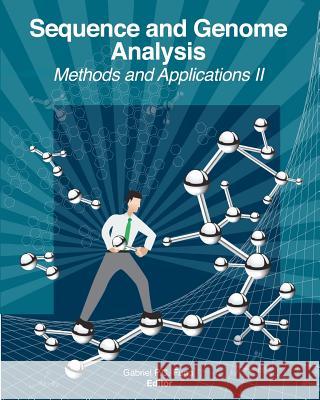Sequence and Genome Analysis: Methods and Applications II » książka
Sequence and Genome Analysis: Methods and Applications II
ISBN-13: 9781463789138 / Angielski / Miękka / 2011 / 184 str.
"Sequence and Genome Analysis: Methods and Applications II" is a continuation of our previous book, entitled "Sequence and Genome Analysis: Methods and Applications." Chapter 1 covers several aspects of protein structural motifs, including the procedures and approaches for detecting and associating protein structural motifs to functions, as well as the issues and limitations of the methodologies based on 3D motif for function prediction. Chapter 2 proposes a computationally efficient algorithm for identifying structural motifs. This algorithm considers the dynamic nature of the folding process, captures both local and non-local interactions between residues, and identifies structural motifs in a 3D space. Chapter 3 discusses the Watson-Crick finite automata. Watson-Crick automata are devices with two reading heads that can scan the two strands of a DNA molecule and decide whether or not the molecule is acceptable. They are essential in the field of DNA computing and have an important role in formal language and automata theory. Chapter 4 introduces logoBar, which is a means for annotating and displaying protein sequence logos. Protein sequence logos represent information content matrices of stretches of conserved DNA or protein sequences using a paradigm, in which the height of letters represents the information contribution of each residue in a sequence alignment. Chapter 5 presents an extraction and visualization method of anatomic structures from volumetric medical images, using a new level set method and hybrid rendering technique. The extraction of 3D objects and its visualization is one of the most important steps in the analysis of the preprocessed medical image data. Such data can help in performing diagnosis, treatment planning, and treatment delivery. Chapter 6 takes viral channel forming proteins as an example to outline computational strategies in developing structurally and functionally optimized models (with a minimum input of experimental results), with the aim of understanding the function of a particular protein. Chapter 7 studies hydrophobicity, a topic that has long been considered as one of the primary driving forces in the folding of proteins. This chapter focuses on statistical methods based on factor analysis and filtering to extract cluster-dependent average hydrophobicity profiles in an aligned family of proteins. Meanwhile, Chapter 8 addresses surface-based DNA computing by proposing an algorithm, which can solve a hard computational problem, namely, the Satisfiability problem. This problem is well-known for its exponential difficulty. Chapter 9 introduces a software architecture called GAMESSP2, which is used for protein secondary structure prediction. SSP2 is an abstract software architecture that follows the guidelines imposed by all information sources deemed relevant in implementing a successful secondary structure predictor. GAME stands for Generic Architecture Based on Multiple Expert, and is a tool for designing, implementing, and tuning secondary structure predictors. Finally, Chapter 10 describes an electrical model for fast DNA detection. This model can achieve a resolution of 0.01% for the capacitive shift, using a differential reading of the signals detected by two sensors, namely, a dummy sensor and an active sensor. Similar to Volume I, this volume is suitable for advanced undergraduate students and postgraduate students. It takes a practical approach rather than a conceptual approach. Moreover, it offers a truly reader-friendly way to get to the subject related to bioinformatics and biotechnology, making it the ideal resource for any student new to this subject, and providing a definitive guide to anyone in this vibrant and evolving discipline. This book is an invaluable companion for students, from their first encounter with the subject to more advanced studies, while the full-color artworks are designed to present the key concepts with simplicity, clarity, and consistency.
Zawartość książki może nie spełniać oczekiwań – reklamacje nie obejmują treści, która mogła nie być redakcyjnie ani merytorycznie opracowana.











